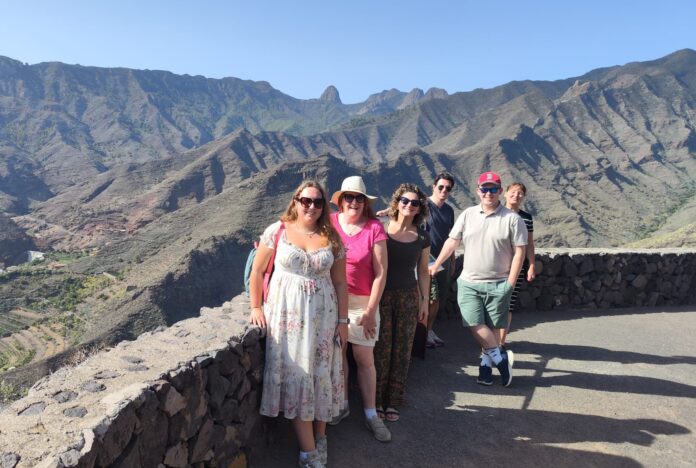
ITTN’s Julia Labedz continues her Press Trip in La Gomera with Turismo de Tenerife & Turismo de La Gomera, joined by Niamh McCarthy (The Irish Sun), Joan Scales (Irish Daily Mail), Paul Kavanagh (Irish Daily Star), and Shane Brennan (Irish Independent).
Hosted by the Spanish Tourism Office in Dublin and the Canary Islands Tourism Board, this section of the trip is courtesy of Turismo La Gomera, a lesser-known island Gem in the canaries.
Day 3
The day began with a transfer from the Tivoli La Caleta Tenerife Resort to Los Cristianos Port by the Sierra y González transport company. At the port, the group boarded a short 1 hour ferry bound for La Gomera, a destination known for its unspoiled natural beauty and status as one of the Canary Islands’ most authentic retreats.

With its off-the-beaten-path charm, La Gomera is much different to the more popular islands of the Canaries. With around only 1% of the archipelago’s total visitors, it’s an ideal destination for those looking for a slower pace, pure nature, and plenty of culture. The entire island is a UNESCO Biosphere Reserve, celebrated for its ancient laurel forests, valleys, and distinctive “Silbo Gomero” whistled language, another UNESCO heritage that locals have preserved for centuries. The Island is also regarded as Europe’s best sunset spot!
Upon arrival in San Sebastián, La Gomera’s capital, the group was welcomed by an expert guide whose knowledge of La Gomera’s terrain, history, and traditions would shape the next 2 days. Their first destination was Hermigua, a valley known for its agricultural productivity. Surrounded by terraced hillsides dotted with banana plantations, Hermigua stands as one of La Gomera’s main agricultural centres, contributing significantly to the island’s local economy. The group went through the valley, taking in the hills shaped by traditional farming techniques that have endured for generations.
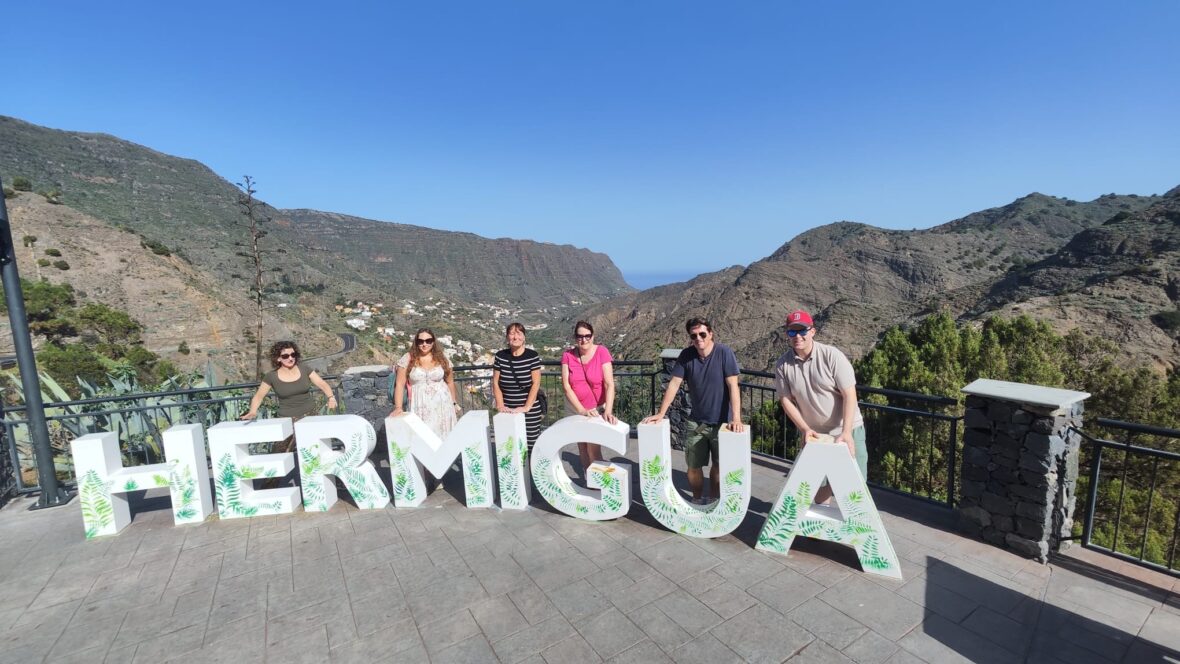
The group then travelled to Agulo, Bombon from La Gomera, and it was clear to see why! Set on a cliff overlooking the Atlantic, Agulo is known for its cobblestone streets, well-preserved traditional homes, and stunning ocean views. The group enjoyed exploring Agulo’s winding, cobbled streets, which gave the impression of stepping back in time, as well as the terraced fields. Locals moved at a slower pace here, and served up delicious Barraquito – a traditional Spanish coffee drink.
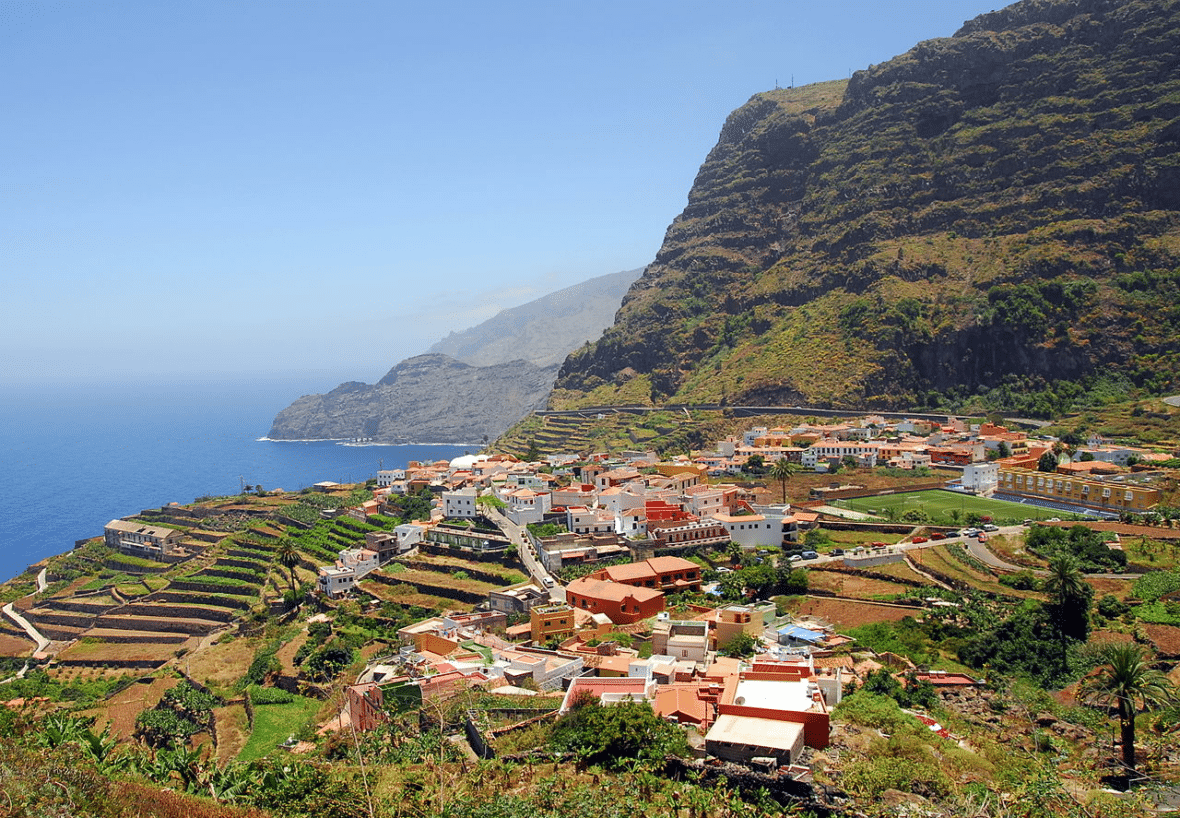
After a coffee break, the group travelled to Abrante Viewpoint, a seven-metre overhang with a glass floor, overlooking Agulo, with Tenerife visible in the distance. The terrain around this glass overhang viewpoint was Mars-like, with an expanse of red soil stretching on and on, broken only by the bright blue sea.

Next, the group visited Juego de Bolas, the interpretation centre of Garajonay National Park. Here, an in-depth exhibit gave the group a look into the park’s unique ecosystems, especially its ancient laurel forest, which dates back millions of years to a time when such forests were common across the Mediterranean. Juego de Bolas also showcased the heritage of La Gomera, including traditional crafts, agricultural practices, and the significance of the “Silbo Gomero” whistling language. The centre’s botanical garden allowed them to observe endemic plant species up close, many of which are found exclusively on the island.
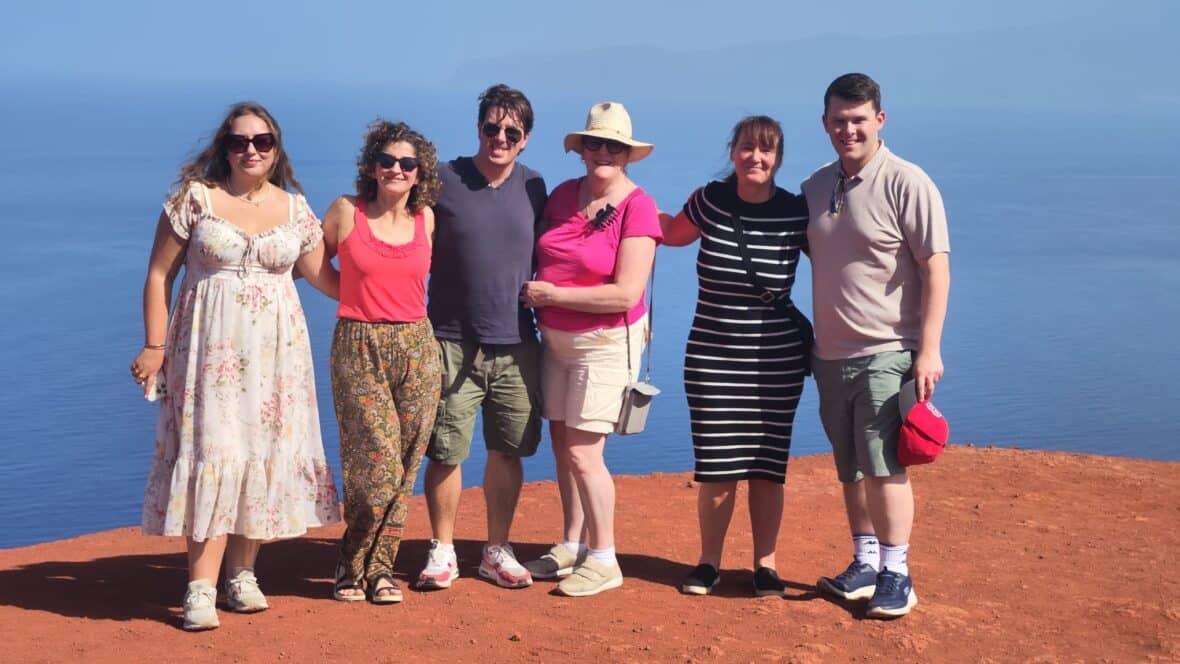
The journey continued to Vallehermoso, a valley located in the north of La Gomera, surrounded by stunning rock formations. The group enjoyed a traditional lunch at Restaurant El Carraca, sampling local dishes, like goats cheese in palm honey, all made locally on the island.
On the return to San Sebastián, the group made a stop at several Miradors, otherwise known as viewpoints. The drive from A to B within La Gomera is almost wholly made up of winding roads, cliffsides, and above all, stunning views. Rock formations shaped by ancient volcanic activity are iconic landmarks of the island and provide some of the best vantage points to appreciate La Gomera, and there are so, so many of them.
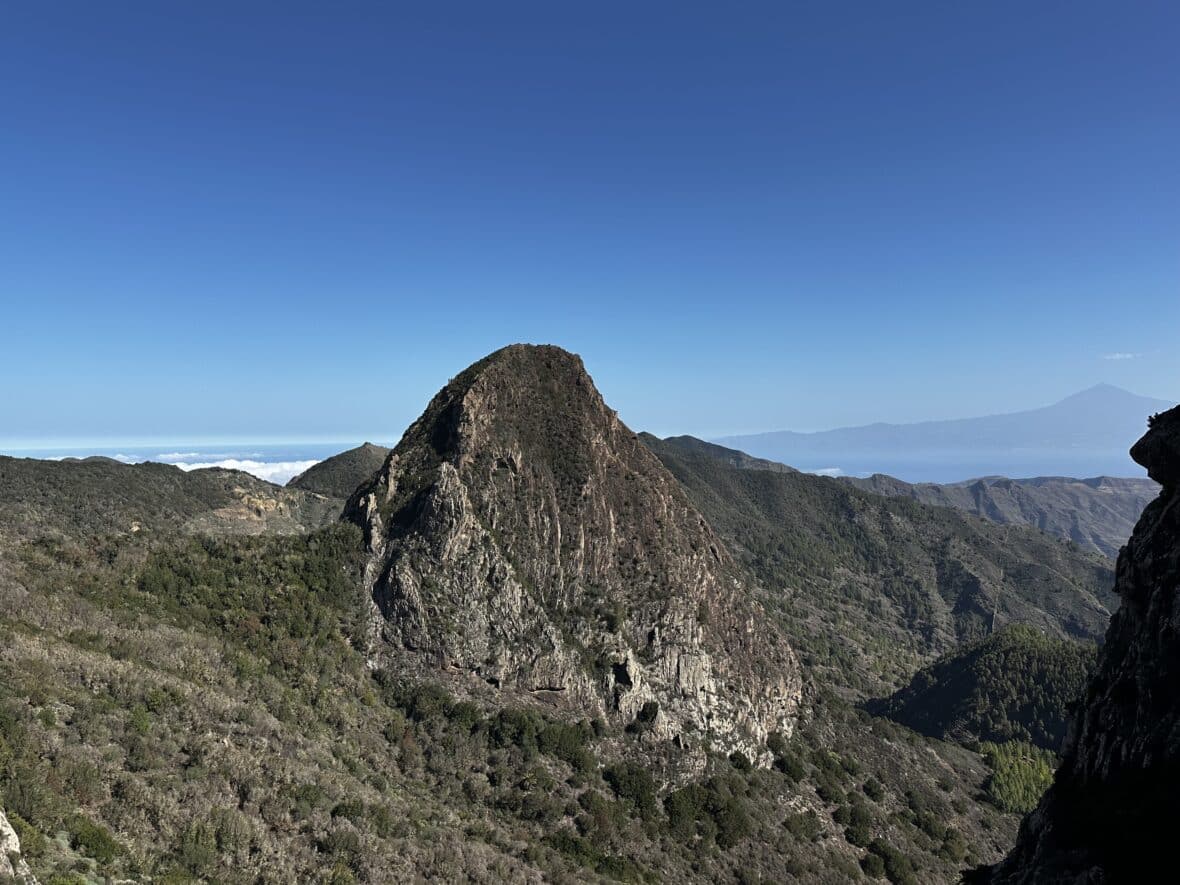
The group travelled through Las Hayas, El Cercado, and Chipude, villages known for their traditional pottery and artisan crafts. These communities maintain many of La Gomera’s cultural practices, and the route provided a look into the island’s rural life. El Cercado, in particular, is famous for its pottery, made using techniques passed down through generations, and the group visited Alfareria Maria for some shopping.
In the evening, the group checked in at Bancal Hotel & Spa, a new four-star hotel that opened earlier in the year in July. The hotel combines traditional Canarian architecture with modern amenities, featuring spacious rooms with mountain or sea views, a few outdoor pools, and a full-service spa offering a range of wellness treatments.

Its location, just 10 minutes from San Sebastián, makes it ideal for those looking to unwind after a day of exploring, and the group certainly took advantage of this! The evening finished with a delicious and relaxed dinner at the hotel.
Day 4
The fourth day began with an early start as the group met their guide in the Bancal Hotel & Spa lobby. The morning’s destination was a tour of San Sebastián, where the group explored the centre, including a buzzing Main Street filled with locals, the Archeological museum of La Gomera, and the church, where Columbus and his men allegedly prayed before setting off for the New World.

Next up was a visit to the Garajonay National Park, a UNESCO World Heritage Site celebrated for its dense laurel forest. Considered the “jewel of La Gomera,” El Cedro Forest within the park is a perfect example of these woodlands, which have disappeared elsewhere but thrive on the island due to La Gomera’s unique climate – often referred to as the best in the world, with temperatures remaining a stable 20-25 degrees year-round.

The group did a short hike through El Cedro, observing towering laurel trees and ferns while the guide shared insights into the ecological importance of Garajonay and the conservation efforts to protect its endemic species, many of which are parts of prehistoric Europe.
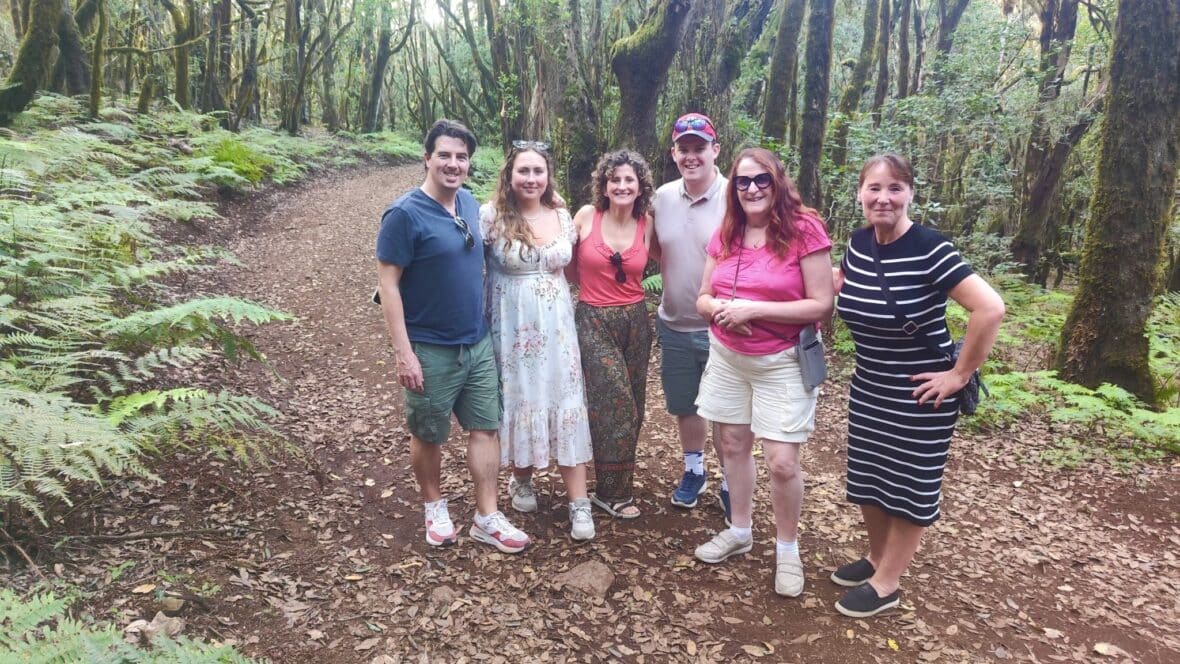
After exploring Garajonay, the group went to Valle Gran Rey, a stunning valley known for its terraced slopes, hills, and their coastal village. Popular among eco-tourists and hikers, Valle Gran Rey combines agricultural traditions with a really laid-back atmosphere, attracting those who enjoy natural beauty and a slower pace of life. There are plenty of sandy beaches in the area, as well as restaurants, like Charco del Conde Restaurant, where the group were treated to traditional Canarian dishes for lunch with a gorgeous sea view.
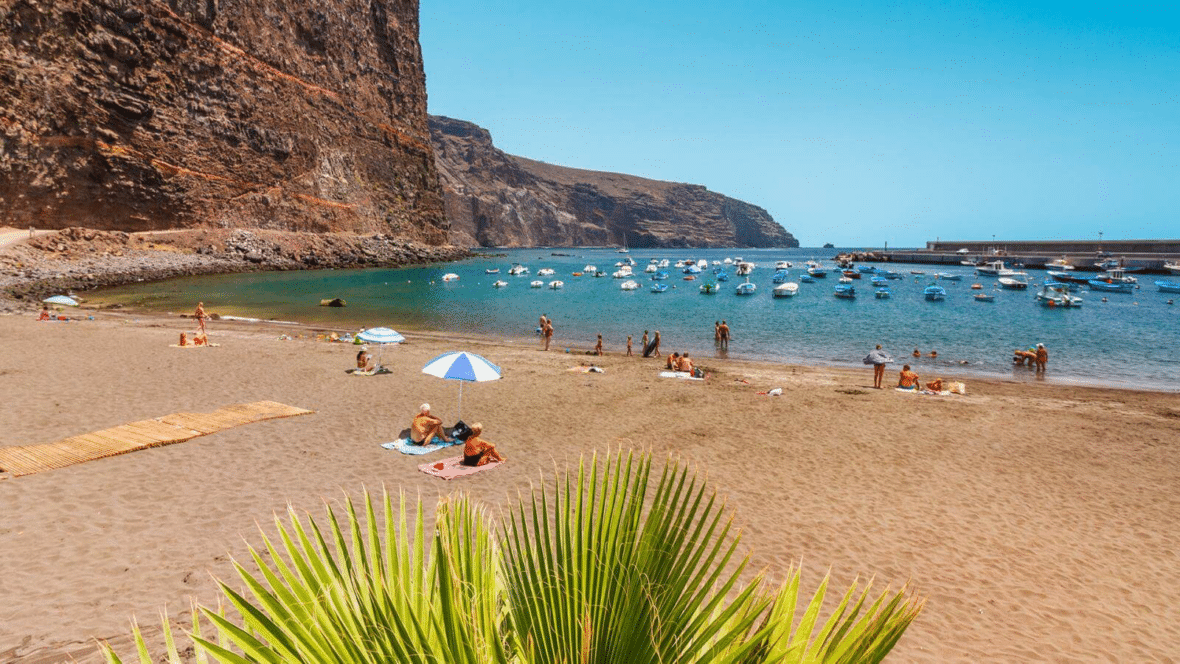
Afterwards, the group returned to Bancal Hotel & Spa for dinner, making several stops along the way, mostly at Miradors with sunset views.
This exclusive look into La Gomera has highlighted the island’s commitment to preserving its natural and cultural heritage, making it a unique and sustainable experience within the Canary Islands.
ITTN’s Julia Labedz would like to thank the Spanish Tourism Office in Dublin, the Canary Islands Tourism Board, Turismo de Tenerife, Turismo de La Gomera and the guide, for all their generous support and organisation throughout this visit. The opportunity to discover La Gomera has showcased the island’s unmatched appeal as a destination for travellers looking for Canarian authenticity and connection with nature.




